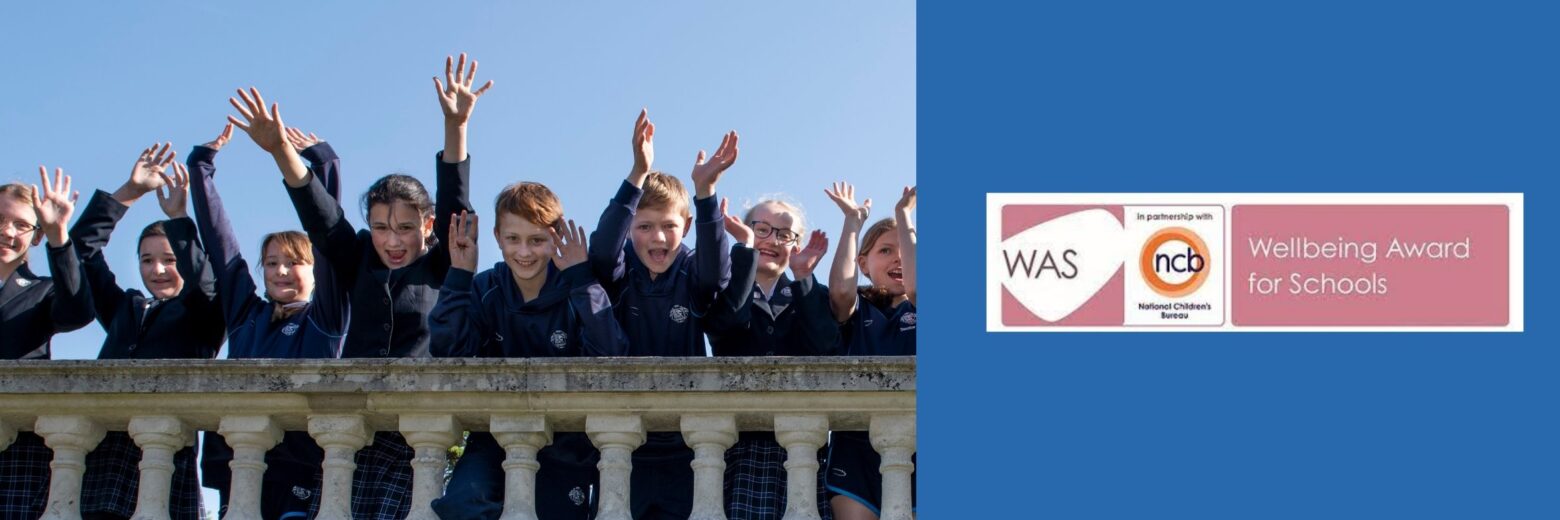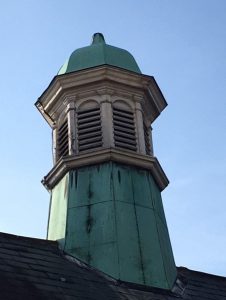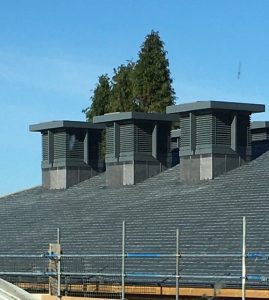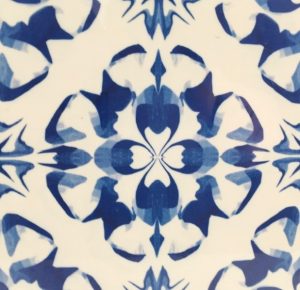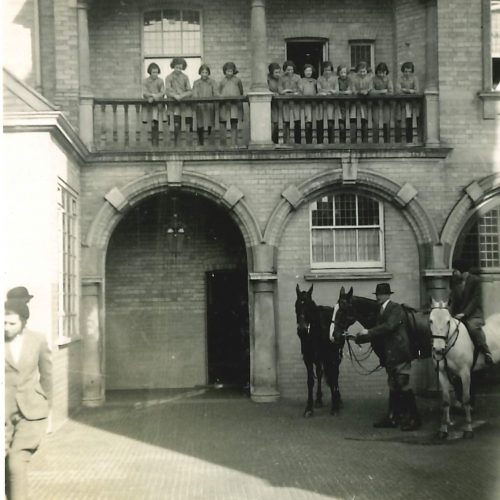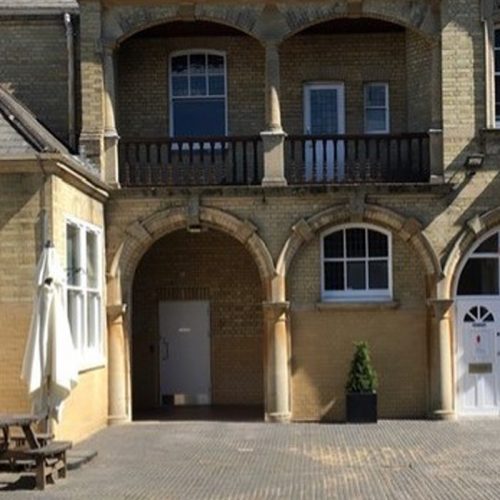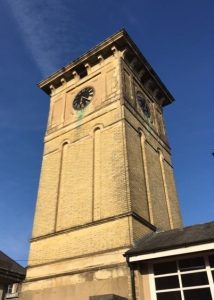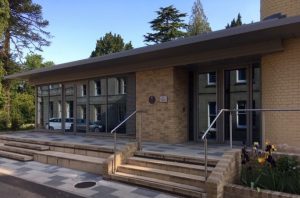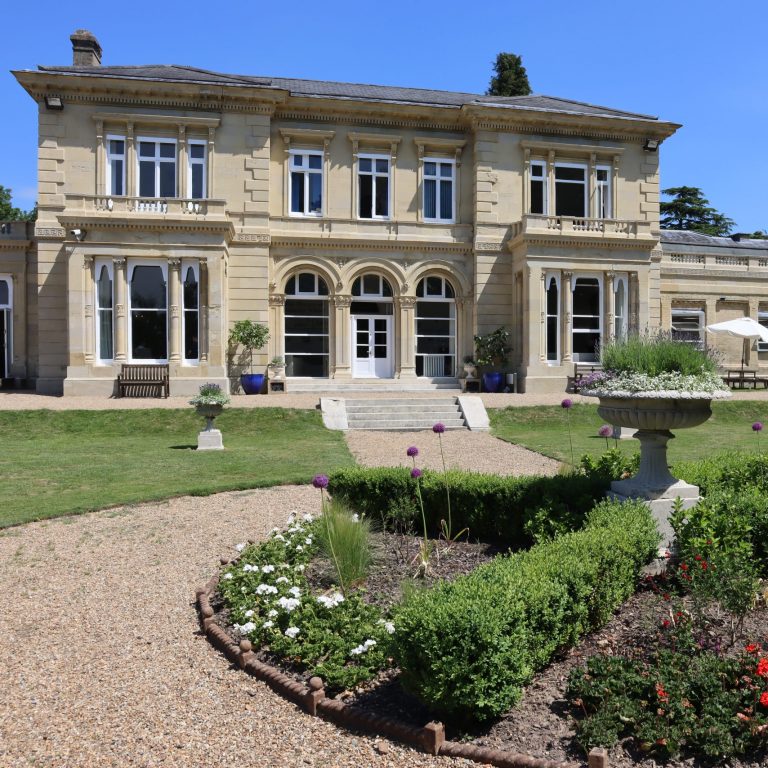Mr Cotton’s Dunottar Ramble
26th May 20
Whilst everyone has been away and working hard at home, I’ve had a good wander around the place and discovered a few interesting things about our lovely school. I hope you enjoy this Dunottar factsheet and do have a go at the questions if you like. Scroll to the end for the answers.
1. Dunottar is well known for its beautiful Rhododendrons. The name of this flowering plant comes from two Greek words: rodon and dendron. What do these two words mean in English? These pictures were all taken at the beginning of May in the school grounds and are just a few of the many varieties.
Rhododendrons can be smaller shrubs or even large trees but can you guess how many species of Rhododendrons there are in the world?
A: 100 B: 500 C: 1000
2. This architectural feature on the roof of the Pelican building is called a cupola (pronounced ‘kyoo-pa-la’) and was built in 1935. Cupolas were added for a variety of reasons but this one, being above the original school gym (now classrooms P1,P2 & P3), would have been installed to provide constant ventilation inside the building. Sometimes though, they are just added for decoration.
Do you know:
- What is this cupola made of?
- Why did they choose this material?
- Why is it green?
- There is something missing on the top of the cupola as it had to be removed for restoration. Can you remember what it was?
3. Here is a modern equivalent of a cupola, there are six of them installed on top of our new assembly hall building. The purpose is the same as the one on the Pelican roof, to ventilate the building. The operation of this new type of cupola is assisted by sustainable electrical energy produced from solar panels installed on top. So, a slightly more tricky engineering question, do you know what this electricity powers and operates?
4. This lovely design was created using an Italian technique called Millifiori and was made for us by the ‘DoodlePippin’ company in Reigate. The unique design was then used as a pattern on handmade glazed tiles. Do you know where these tiles are located in the school?
5. Did you know Dunottar’s mansion house has a large cellar with a network of tunnels? This old boiler from the 1930s is underneath the staff room. It must have been a difficult job to fuel the boiler all day during the winter months to keep the house heated. What kind of fuel would have been used? There is a clue in the picture of the strange structure with a grey lid outside the maths office.
6. Part of the cellar has large, cool storage bays that are labelled by Victorian age ceramic numbers. What do you think these numbers were for and can you name two things that were stored there?
7. This lovely picture from the early 1930s clearly shows what the courtyard was used for. It hasn’t changed that much compared with the new picture on the right, but it is clear that Mr Huxley’s photographic studio used to be a stable. The courtyard floor is made of little square cobble stones. Do you know why this surface was used?
8. Our famous Dunottar clock tower. This still has the original clockwork winding mechanism. It has to be wound up by hand every week. Do you know how many turns of the winding handle it takes to do a full wind up?
a. 54
b. 238
c. 156
9. These mighty trees can all be seen in the grounds and were part of the original landscape design. That makes all of them over 153 years old! Can you identify all three of them?
10. Our lovely new Sixth Form Centre and refurbished Pelican building keep nice and cool inside during the summer. The buildings do not have costly air conditioning but instead use an environmentally sustainable method to keep the heat out on a hot day. Do you know what this is?
11. The great Dunottar window mystery! Look at these windows on the west side of the mansion house (Ms Pettet’s music room). Can you see the gap between the box frame and the window frame? It starts thin at the bottom and then gets much bigger at the top. There is no structural damage so this is quite safe, but do you know what caused this? (clue: it was something much more forceful even than Miss Pettet’s singing!)
12. These Bath stone carvings are called bucranium and the practice dates back to classical Roman times. In those days, carvings like this were used to represent sacrifices made to the gods but it became fashionable during the various architectural revival periods of the 18th and 19th centuries to use these features again. The creepy looking skull is probably an ox. The dove carving was probably meant to represent peace and harmony for the house.
Do you know where these carvings are?
That’s all for now, I hope you enjoyed this little ramble. The answers can be found below.
Enjoy the sunshine and stay safe!
Mr Cotton
Answers
- Rodon = Rose Dendron = Tree C: 1000
- A: Copper B: Copper is waterproof and does not deteriorate C: The chemical reaction of copper and the elements causes a green patina to form D: A wooden sphere
- The solar panels provide energy to automatically open and close the louvres on the turrets depending on the air temperature, and allow fresh air in
- Food tech room
- Coal (the structure outside the maths office is a coal chute added during the 1930s)
- Numbers were used to identify the bays and therefore batches and ages of wine and cheeses
- The cobble stones were hard wearing and helped horses hooves get traction and also helped to prevent them slipping
- 156 turns
- Oak Tree, Cedar Tree, Monkey Puzzle (Araucaria)
- The windows have a special glass which reflects away the heat from the sun, so the inside of the building stays cool
- The damage was caused by the blast of a V1 flying bomb which landed in the grounds during the WW2
- Ox head: above the front entrance to the mansion. Doves: above the back of the mansion conservatory entrance.

